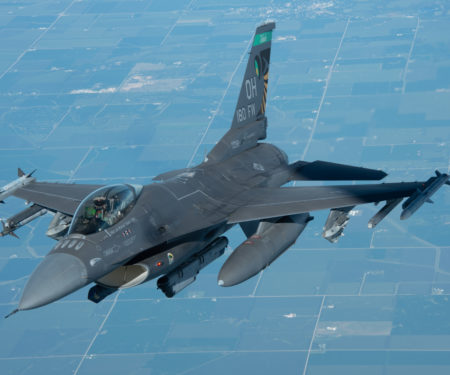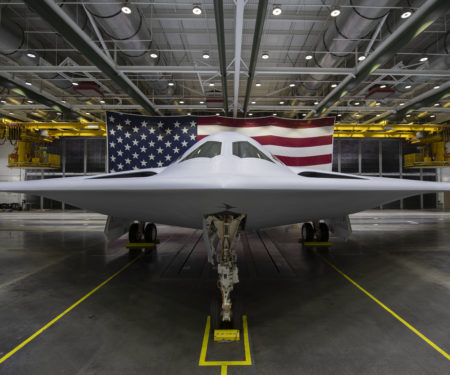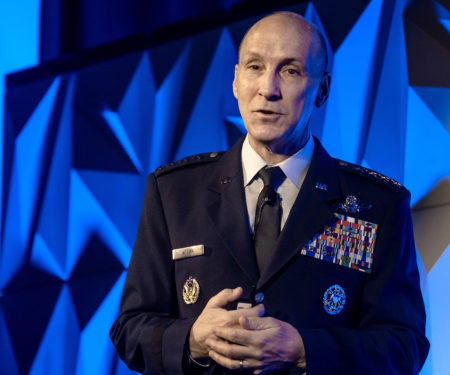Radar Sweep
The Air Force Is Moving Forward with a Replacement for Its Decades-Old Long-Range Radar
The Air Force is still using antiquated long-range radar systems from the 1960s to know what threats are approaching on the modern battlefield. The service plans to fix that with the TPY-4 radar, a ground-based array that has longer range and better coverage than its predecessors and can also pick out smaller objects like unmanned aerial vehicles from the background clutter.
Islamic State Leader Operating in Somalia, Bilal al-Sudani, Killed by US Military Forces
The U.S. military has killed a senior Islamic State leader during an assault operation in northern Somalia. Defense Secretary Lloyd Austin, who announced the operation, identified the leader as Bilal al-Sudani, a key operative and facilitator for ISIS’s global network. “This action leaves the United States and its partners safer and more secure, and it reflects our steadfast commitment to protecting Americans from the threat of terrorism at home and abroad,” Austin said in a statement Jan. 26.
Experts, Data Point to Women as Best Military Recruiting Pool
The United States military is coming up on 50 years as an all-volunteer force, at a time when the services are facing a historically difficult uphill battle finding enough qualified volunteers to fill their ranks. With that in mind, social scientists, military experts, and national security strategists came together at the Naval Academy on Jan. 25 to tackle some pressing questions: What will the military do in 2040, who will serve in it and how will it recruit people?
Left in Limbo, a Handful of Biden’s Defense Picks Await Senate Action
The six remaining Biden administration nominees for the Defense Department's Senate-confirmed posts have been waiting so long that they required renomination in a new legislative session. The four longest-in-limbo nominees—all people of color—were approved by the Senate Armed Services Committee last year, but were not sent onward for a vote by the full Senate. As has become general practice, their nominations were returned to the president after the 2022 session ended.
‘Worst Thing in the World’: Space Acquisition Leaders Target Satellite Ground System Gaps
Frank Calvelli, head of space acquisition for the Department of the Air Force, has made crystal clear over recent days his intent to resolve the long-standing problem of Pentagon satellites becoming operational years before ground equipment needed to use them is ready. “It is the worst thing in the world to launch a spacecraft and not be able to use it, because you provided basically nothing at that point in time for the warfighter,” he told the GovConWire 2023 Acquisition Forum on Jan. 18.
Missileers Worry About New Signs of Link Between Service and Cancer, Latest in Toxic Exposure Concerns
The community of missileers who have spent years standing watch in concrete bunkers for days at a time while operating America's nuclear arsenal are voicing concern about a presentation detailing a possible link between their service and cancer. The warning, delivered by a Space Force officer who gathered details on cancer diagnoses received by veterans who served at Malmstrom Air Force Base in Montana, is the latest hint in what advocates describe as a growing body of evidence of potential toxic exposure inside nuclear missile silos.
DISA to Add Generative AI like ChatGPT to Tech Watch List
The Defense Information Systems Agency is adding generative artificial intelligence to its forthcoming mid-year fiscal 2023 tech watch list. Generative AI can best be exemplified by the ChatGPT function that is taking the internet by storm. Users can give the technology a prompt such as asking it to write a song in the style of an artist or, as Rep. Ted Lieu, D-Calif., recently did for an Op-Ed warning about certain aspects of AI, ask it to “[w]rite an attention grabbing first paragraph of an Op-Ed on why artificial intelligence should be regulated.”
US Space Command’s Shaw Sees Need for Rapid, Responsive Launch
A senior U.S. Space Command official sees an increasing need for a rapid launch capability as threats from adversaries like China and Russia put on-orbit assets at risk. Lt. Gen. John Shaw, deputy commander of SPACECOM, told C4ISRNET this week there’s a growing need for on-demand launch capabilities that can be leveraged to replace or augment satellites, a concept referred to as tactically responsive space.
How Area 51 Became a Hotbed for Conspiracy Theories
“What happens in Vegas, stays in Vegas.” That’s the motto of visitors to the Nevada city known for decades as a destination for dubious characters and debauchery. But news of what happened on July 7, 1947, in Roswell, N.M., and subsequently during the 1950s at the Nevada Test and Training Range just outside of Las Vegas, did not remain confined. Towards the 1970s and 80s, rumors found their way into the collective American consciousness and took hold as definitive proof of extra-terrestrials, launching government conspiracies known as “The Roswell Incident” and “Area 51.”


